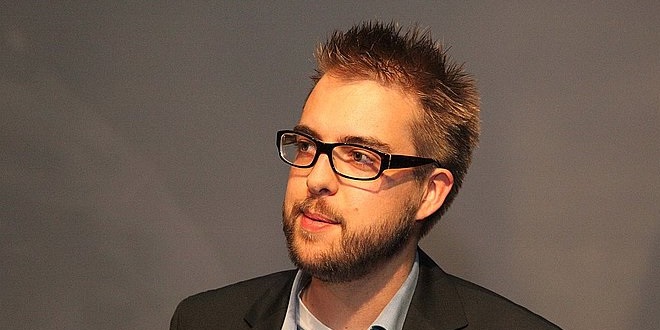
by tomnora | Aug 26, 2014 | Angel Investor, Drupal, founder, PHP, Revenue Growth, SaaS, Scalability, startup, startup CEO, venture
As further market proof of the power of Drupal in the enterprise, Acquia has received about $100 million in funding in the past 3 months, which puts its valuation at over $1 billion.
http://j.mp/nora-acquia
There’s a lot of buzz about the Amazon acquisition of TWITCH this week. As a personal friend of the original investor, I’m very happy for this transaction – after 7 years of work, repositioning, and sticking to it their vision has paid off. But that’s a different article…
Less prominent in the news, but possibly more important, is Amazon’s investment in ACQUIA. Acquia, Inc. is the for-profit company founded by Dries Buytaert, the inventor of Drupal, to support his open source project. Drupal was launched in 2001, and Acquia started in 2007. When Open Source software projects are launched, the progenitors often start a for-profit sister company to garner some income from training, support and consulting. Because they are open source. the original products can’t generate revenue, so when these OS projects occassionally blow up into phenomenons like Drupal and WordPress have over the past few years, it’s gratifying but also quite frustrating to watch others derive so much value from your baby while you toil away to lead its growth with no financial return. Plus, there are tons of expenses like servers, bandwidth, office space, travel and the time of many professionals.
Red Hat was one of the first of these types of companies bridging open source with big finance, leveraging Linux support into a profitable business, also leveraging the enterprise. They kind of invented this business model. Sun Microsystems and others almost made it happen, but they were only semi-free. Google has optimized this open source to freemium model in almost all of its products.
But Drupal has succeeded way beyond it’s original expectations. It was originally started as a college dorm project, where many of the best products on the web seem to hatch. It gained recognition during the 2004 presidential campaign when Howard Dean’s IT director decided to use it as a platform for community and campaigning. After that it quickly gained credibility and spread throughout government, and corporate America.
Drupal is now driving some of the largest and most critical websites in the world, including The White House, The Oscars, Twitter, Mercedes Benz, Warner Music Group, The Louvre Museum, The City of Los Angeles and Stanford University. Over its 13 year life the web has vastly changed from primarily static pages to dynamic database driven automated (“rendered”) web page serving, which Drupal excels at. The average website size has also greatly increased, aided by automated rendering systems like Drupal and others. The term Content Management System has become mainstream in everything from the Fortune 500 to small businesses.
Some of Drupal’s success has come from luck, but most of it has been because of strategy and excellent timing. Dries has carefully pushed the technology not to the bleeding edge, but towards the modern edge where enterprises are comfortable. He and his team have avoided many temptations to try new fads, make big changes and try to grow faster. Currently they face enormous pressure to innovate faster, and are responding with Drupal 8, which will incorporate many new modern web architectures previously not part of the Drupal platform.
Acquia has been critical in supporting, guiding, enhancing and positioning Drupal for the past 7 years. It was a startup that launched with funding from day one and has never looked back.
Amazon’s motivation in buying into Acquia is a bit more self serving. Acuia provides premium, high security, supported hosting to it’s customers, which all runs on top of Amazon AWS. Amazon can see that some of AWS most robust and challenging work comes from Acquia with Drupal. For example, Acquia runs its Drupal infrastructure on more than 8,000 AWS instances and serves more than 27 billion hits a month (or 333TB of bandwidth). Amazon has a strategic value beyond many other companies or VCs in their investment.
What will come next? Will Amazon try to acquire all of Acquia before the inevitable IPO? I think we can bet on that.
This is a very contemplative time for Buytaert – he has fierily protected Drupal’s independence and strategic positioning, taking risks but protecting his large customers from drama, can he keep Amazon and Bezos at bay? I have no doubt he will, for he is a true “Startup CEO”, even though his title is CTO at Acquia.
@tomnora
more info on the funding round from @thewhir http://j.mp/nora-acquia

by tomnora | Aug 6, 2014 | Business Development, CEO Succession, early stage, founder, Revenue Growth, Scalability, startup, Tom Nora, venture
“Creativity takes courage.” –Henri Matisse
This is one of my favorite quotes about innovation, by an innovator who is still revered 100 years later; it’s the first thing you’ll see if you go to my personal website http://tomnora.com/ . Matisse was an amazing innovator, and his innovation and originality
Innovation, Originality, Creativity – why are these things so important in the tech startup world? And what do they have to do with art or painting?
I have the opportunity to visit many secondary and tertiary startup markets in my travels, meaning not Silicon Valley or New York, and one of the things that always strikes me is the lack of originality in almost every company pitch I see or hear.
I can see that the entrepreneurs I meet are sincere, have usually put a ton of work and pride ion their invention or product. Often they have put a fair amount of personal or family capital into the venture (these days that’s usually their parents money).
The major flaws in their planning process are denial and ego fortification – they don’t do enough homework to see how many are already doing something similar because they don’t really want to know; and they highly overrate themselves as amazing entrepreneurs. This is a bad combination for success, but I see it daily.
I get it; I know it’s more difficult than ever to build a real career and easier than ever to start a company. But the very core of creating an interesting and new business should be the concept of originality. Some originality, enough to be different, unique, without being too weird.
Real originality comes from within, because it is inspired, comes from adrenaline and emotion, not from a spreadsheet or desire to merely make money. Finding the mid point between originality and capitalism is what I define as business innovation.
There’s nothing new under the sun, so you must critically modify, hack, or turn sideways existing systems with a truly new vision. Instead of just copying or slightly modifying something you see, try to take it a few steps further.
One of the quite innovative methods Matisse and his peers used was finding inspiration from other skills they already knew, leveraging their expertise as craftsmen. Matisse was a draftsman, a printmaker and a sculptor, and you can see these influences in his paintings.
Part of the magic of great business innovations is knowing which rules to break. Matisse broke some of the rules, but kept many intact. The rules about the way business processes flow are too often just accepted, but if you can analyze them, find an achilles heel, then innovate a better answer. Get rid of the obsolete rules without breaking the good ones, and great things will happen. It’s about where to hack and where not to.
I went to a pitch fest in one of those secondary markets the other day. Most of the presentations were weak delivery, boring, been done before and uninspiring. But there was one that was pretty amazing, by an 18 year old who had become deaf at 12. He has developed an exercise system for handicapped people; you tell by his excitement and thought process that he was inspired, and created true innovation. He wasn’t polluted by how corporations work or the rules of business – he was still in high school.
Another Matisse quote is “There are always flowers for those who want to see them.” Look carefully, take the extra time and find the uniqueness in any idea you want to realize – it’s there. Find me on twitter at @tomnora
by tomnora | Mar 10, 2014 | AdTech, early stage, founder, Tom Nora
Let’s start with the Non-Tech – Here’s a small piece I just wrote on the subject of how to visit the Bay Area and not be totally focused on techno-nerd things:
You should also expand your horizons beyond the techy stuff. I’ve worked and lived in Silicon Valley off and on for over 30 years (really!) and always enjoy the escapes from my techno-binary lifestyle there.
In fact, if you’re not so one dimensional and career/money/technology focused, you’ll probably have a better chance of meeting the right people.
I’m not disagreeing with the other lists here, especially Scoble’s list is very good and you should do all those. But here are a few of my favorites…
NON-TECHY EXPERIENCES:
>> Go to downtown Los Gatos and walk Main Street and University Ave, it has a very non-techy feel to it. Then sit in the Los Gatos Coffee Roasting Company for a bit.
>> Sit in the Rodin Sculpture Garden on Stanford Campus.
>> Drive the hills between Silicon Valley and the coast, go to the Half Moon Bay for dinner on the pier.
>> Drive up Sand Hill Road, slowly, and take it all in. This is the origin of most of the biggest VC deals in history.
>> Hit some dive bars in SF, there are too many to even list. SF is becoming more techy, but there are still many places where you can forget you’re in the center of techdom.
>> Walk the Golden Gate bridge.
Since SV is so tech focused, it’s actually a pleasant surprise when you find non-tech things to do there. If you do some of the above, I guarantee your trip to Silicon Valley will be much better.
For the technical visit list, my favorite was assembled by Steve Blank…
A Visitors Guide to Silicon Valley | Steve Blank.

by tomnora | Feb 26, 2014 | AdTech, Angel Investor, Business Development, CEO Succession, early stage, founder, Hawaii, Launch, SaaS, Scalability, startup, startup CEO, Tom Nora, venture
Here are a few traits to try to emulate if you want to be a successful startup guru. Success may be financial, fulfillment of a life goal or even altruistic. Success will begin to create itself if your heart is in the right place…
Take a look at the 9 things below and send me feedback on your thoughts.
1… Genuineness, honesty.
2… Humble openness to feedback. When I returned to LA in 2011 after being away for many years, I was smacked in the face by the volume of young startups that were in their first stages; and many of them sought me out. After a bit I noticed a dangerous trait in many of them – a false confidence and no ability to hear constructive criticism. The attitude was “just give us funding” even though I could see several fatal flaws that they couldn’t.
Being closed to feedback in itself is a sign of bad health, a fatal flaw. You don’t take all advice given to you of course, but you listen to it, calibrate it, mix it in with everything else you know that they don’t. You also have to know whom to spend your time with, many of the wrong people will want to offer advice, mostly for the wrong reasons.
3… A set of doctrines. It’s almost corny to see in many companies; they’ve worked out an internal lexicon, code words, project names to make things more unique and understandable. It speeds up communication. It
4… Taking everything from 90% to 110%. This is one I often see in looking under the hood of successful startups. It’s like a beautiful restored car that has every detail perfected when you inspect it further. The wiring, the upholstry, the under carriage – all the little details that most never see. In startups there is a beauty when you see these little things. I can think of many startup companies
5… Belief in the Idea. Belief that you have something unique, that the world, or part of the world, really does need this new thing/method/service. This is a key factor in many of the successful kickstarter products.
6… The journey is the reward. The #1 request I get from would be entrepreneurs startups is ” how do you do it, what does it take to build a successful startup, what should I do differently? They want all of these answers in one sitting, over lunch, and then want to go off and pour them on top of their startup like syrup. Great questions, but it doesn’t work like that. My answer is this… Get up every morning, work very hard (see 3. 90 to 110) make the best decisions you can, cry a little bit, then do it again the next day. Do that for several months continuously. Enjoy the process with its imperfections, if nothing else you’ll create a rhythm for yourself and your team.
7…Self Confidence. This is the most important trait of all. Unyielding confidence, an authentic, real confidence that comes from deep down inside is what takes you through the bumps and setbacks. Think of a topic you know that you have down cold. Nobody can tell you you don’t know this.
Not false confidence, that will do the opposite and cause failure.
8… Location. Being located in the right ecosystem helps foster self confidence; you know it can be done there, there’s success in the ether, those ahead of you help you make things happen, critique you,
9… 5 Best Friends. You want 5 people in your business-sphere that you can go to, brainstorm with, respect, and drive your progress. They must be influential, cognizant, and you must reciprocate, pay it forward. Don’t compromise here. If you don’t have 5 then go find them.
Contact me at t@tomnora.com

by tomnora | Feb 20, 2014 | Angel Investor, Business Development, CEO Succession, early stage, founder, Hawaii, Launch, SaaS
 Last week I witnessed again the difference between 2 people meeting in person compared all other forms of communication we currently employ.
Last week I witnessed again the difference between 2 people meeting in person compared all other forms of communication we currently employ.
It’s amazing to see the power of the connection between 2 people in proximity to each other. In the startup world, it seems to be winning over the bits and bytes style. I’ve discounted the value of face to face recently as much as anyone, leaning heavily on asynchronous electronic communication for much of my business and personal life, and even using broadcast communication (twitter, Facebook, LinkedIn, Pinterest, email, …) to replace individual communications. But we all should rededicate ourselves to the face-to-face – the random, the first time, the networking, the required, the “have a good weekend”. Connecting on LinkedIn or FB is great but usually leads to few subsequent actual interactions. Apple’s face time is bridging the gap nicely, but still isn’t the same. Meetup.com and Eventbrite, founded on this principle of meeting in person as a response to too much Internet meeting, has helped to spawn, grow and change thousands of startups.
So, back to last week – at a startup mixer I was walking past someone headed to my seat, and we kind of got stuck in the crowd face-to-face. He had on a name tag, I didn’t. We couldn’t move. So he stuck his hand out to say hello, and we wound up talking for 10 minutes and definitely made a bit of a connection. We found several things we had in common, most people do. Since then we have met and emailed and referred business to each other, all from a semi-random meeting.
We never would have connected otherwise. If we saw each other on the street or lived on the same block we probably would just walk on by. So get out there, go to things that you like and are interested in. Barriers will melt. @tomnora
by tomnora | Dec 28, 2013 | Business Development, CEO Succession, founder, Revenue Growth, SaaS, startup CEO, Tom Nora
Maximizing shareholder value: The goal that changed corporate America – The Washington Post.
via Maximizing shareholder value: The goal that changed corporate America – The Washington Post.




